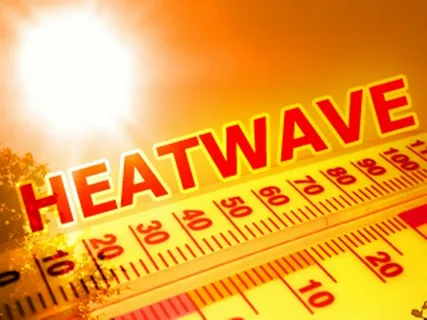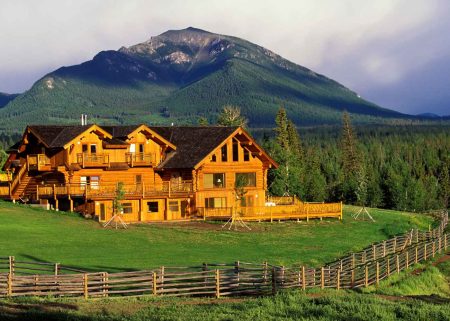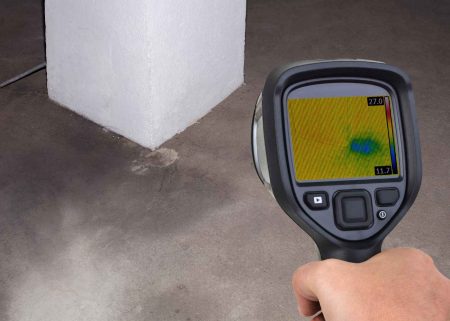When the forecast calls for triple digits, it’s not just about comfort, it’s about keeping your home, health, and systems from cracking under pressure. A summer heatwave can turn everyday routines into unexpected challenges. Here’s how to get ahead of it before the heat settles in.
What Is a Summer Heat Wave and Why Prepare?
A summer heat wave isn’t just “really hot weather.” It’s a prolonged period of abnormally high temperatures, well above the local average, that can severely stress your home, body, and infrastructure. It’s not just a weather event, it’s an infrastructure stress test. Think of it as the summer version of a deep freeze: it reveals every weakness in your home’s thermal design, water systems, and even your power dependence. It’s a test of resilience.
Most homes and systems are designed for normal weather patterns. When temperatures surge beyond expectations for days on end, air conditioners overwork, water evaporates faster, and materials like pipes and roofing expand and contract more rapidly, leading to failures, leaks, or full-on system breakdowns. Roof temperatures can hit 160°F+, warping shingles or weakening seals. Water expands, pressure spikes, and your plumbing gets pushed to its limits, especially if it’s aging or exposed. Your electrical panel may struggle if the AC, fridge, and fans all surge at once.
That’s why a summer heat wave isn’t something to “tough out”, it’s something to actively prepare for. Your home isn’t a bunker; it was built for averages, not extremes.
Treat a summer heat wave like you would a hurricane. You wouldn’t wait until the winds hit to tape your windows, right?
Ways to Beat the Heat: What to Check at Home
Think of it like prepping your home for battle, against heat. Forget the basic “close blinds and drink water” stuff. This is your pre-heatwave audit.
Start with airflow and cooling. A clean HVAC filter can be the difference between cool and chaos, especially when dust buildup reduces airflow and efficiency. Check your ceiling fans, make sure they spin counterclockwise to create a wind-chill effect, and confirm they’re properly installed; wobbly fans can actually reduce airflow. Reflective shades or thick curtains help too, blocking heat and dropping indoor temps by several degrees. Don’t overlook bathroom fans or attic vents, if your fan allows, reverse it to draw hot air upward, and keep attic vents cracked so rising heat can escape instead of baking your house from the top down.
Insulation plays a major role here. Poor attic insulation traps heat and turns your home into an oven. Add or replace insulation where needed. While you’re at it, seal up leaks around windows. Small gaps and cracks force your AC to work overtime; caulk or weather-strip those areas to keep cool air in and hot air out.
Now take a look at your electrical and cooling systems. If your AC tripped the circuit breaker last summer, test it again before you’re in the middle of a heatwave. Consider installing a smart thermostat with geofencing to avoid cooling an empty house, it’s a simple tweak that saves energy and reduces stress on your system. And because blackouts are a real risk, make sure you’ve got backup cooling options: box fans, portable AC units, or even misting spray bottles can be lifesavers when the grid goes down.
Don’t ignore your plumbing. Just like in winter, exposed pipes, like outdoor hose bibs, attic PEX lines, or even garage sinks, can become problem zones. Heat radiates through them and into your home, or they may suffer damage from extreme thermal stress. Knowing where they are lets you monitor or insulate if needed.
One last move that might save your groceries: check your fridge seal. A tight seal helps keep food cold longer if the power cuts out.
And if you’re feeling extra prepared, freeze a few gallon jugs of water. They double as emergency hydration and work great in front of fans for DIY cooling, one of the smartest ways to beat the heat during outages.
How To Keep House Cool In Summer
The best strategies are layered, combining tech, timing, and a bit of old-school know-how. Start by using early mornings and late nights strategically: open windows and blast fans at dawn to flush out yesterday’s heat, then seal the house before the sun peaks. This pre-cools your home and sets the tone for the rest of the day. As temperatures rise, create a pressure lock using rolled towels or draft stoppers to keep cool air in targeted zones instead of letting it drift upstairs.
Keeping house cool in extreme heat requires more than just AC. Contrary to popular belief, ceiling fans and ACs actually complement each other. Fans help circulate cooled air more efficiently so your AC doesn’t have to run nonstop. And speaking of efficiency, most modern ACs work best on a steady cycle, so instead of turning it on and off throughout the day, set a buffer of about 2°F to maintain a consistent temperature without overworking the system.
Zone your cooling efforts. Close off rooms you don’t use and focus your resources on the high-traffic areas where people actually gather. Running a dehumidifier can help too, lower humidity levels make sweat evaporate faster, so your body feels cooler at the same indoor temperature.
Be intentional about when and how you use appliances. Run your fridge, dishwasher, and other heat-generating devices only at night. These don’t just consume energy, they push extra warmth into your space when you least want it. The same goes for cooking: avoid ovens and stoves before 8 p.m., and instead opt for microwaves, outdoor grills, or cold meal prep done ahead of time.
How To Keep House Cool In Summer Naturally
Natural cooling is all about timing, airflow, and shade. Cross-ventilation is your foundation: open windows on opposite sides of the house to create a breeze path, and use fans to guide the airflow if needed. Stack that airflow, set a floor fan to draw cool air in, a ceiling fan spinning counterclockwise to push it down, and a window fan to pull warm air out. You’re essentially creating a pressure vacuum that moves heat up and out.
This is especially helpful for keeping house cool in extreme heat with AC, since it gives your system a head start and reduces total runtime.
Evaporative cooling works surprisingly well in dry heat. One version is the damp sheet trick, hang a wet sheet in front of an open window or fan so air cools slightly as it passes through. Another is the ice bucket hack: place a large metal bowl of salted ice water in front of your fan. The salt lowers the freezing point, making the ice colder and slower to melt.
Don’t overlook the power of surfaces. Mop tile or stone floors with cold water midday or in the afternoon, they absorb the cool and release it slowly, diffusing heat for hours. The effect is small, but noticeable. You can take this even further by misting thermal curtains. As air moves through, you get extended evaporative cooling without needing to drench the room.
Shade matters too. Strategic shading, like planting fast-growing trees, installing awnings, or applying reflective film to south-facing windows, helps block direct sunlight and reduce indoor heat gain. And for bonus points, bring in indoor plants like ferns or peace lilies. They add humidity control and cool the air naturally through transpiration.
If you’re keeping house cool in extreme heat with AC, stacking these natural tricks with mechanical cooling reduces wear and energy bills.
No AC? No problem. Primitive can be smart if you’re stacking the right tactics at the right time.
How a Summer Heat Wave Affects Your Plumbing
Summer heat wave stress plumbing in less obvious but serious ways. The issue isn’t just heat, it’s pressure. As temperatures climb, so does the strain on pipes, joints, and valves. Even in summer, insulation matters. It’s not about keeping pipes warm, but about reducing temperature-induced expansion and slowing pressure buildup. Exposed lines, especially older copper or PEX, expand and contract daily, and those tiny movements can lead to micro-fractures or loosened fittings over time.
Expansion isn’t the only problem. Pressure spikes can cause sudden pipe bursts, especially at weak joints. That’s why it’s critical to know the location of your main shutoff valve before a surprise geyser ruins your day. If your water heater is located in the garage or attic, check the pressure release valve, heat spikes can trigger it unexpectedly, dumping gallons onto your floor. This is especially important during a summer heat wave when the heater may already be working overtime.
Even outdoor faucets aren’t safe. UV exposure and high pressure can crack hose bibs or damage gaskets, leading to leaks you might not catch until the next season. Turning off any unused outdoor taps can help prevent silent damage.
Pay attention to slow leaks, too. Heat elevates water line pressure, and if your system is under strain, small leaks can form. A sudden jump in your water bill could be your only warning. Sprinkler systems need care as well, overwatering dry, parched soil can create pooling that seeps into foundation lines, possibly cracking them if it continues unchecked.
When it comes to plumbing in extreme heat, the signs are subtle but the consequences aren’t. Staying ahead of pressure and expansion risks makes all the difference.
Smart Water Use During a Summer Heat Wave
During a summer heat wave, water is both a resource and a survival tool. This isn’t just about conservation, it’s about reducing strain on your home’s internal systems and easing demand on local infrastructure. Shift heavy water use to early morning when possible. Watering lawns, running laundry, or using dishwashers during peak heat not only leads to faster evaporation and waste but also adds stress to the grid and your plumbing system.
Avoid running water-heavy appliances back to back. Staggering usage, especially if you’re on a septic system or well, gives your setup a break and helps prevent unexpected strain. Long, hot showers should also be skipped when you can. Besides using more water, the humidity they add makes your home feel hotter, not better.
Adopt a greywater mindset. Use leftover water from pet bowls, rinsed produce, or even cooled pasta water to hydrate plants. It’s a simple way to conserve without sacrificing function. Ice habits matter too, many fridges draw extra power to make small cubes constantly. Instead, pre-make large blocks of ice in trays or bowls. They melt slower and save energy.
Hydration needs to be purposeful. It’s not just about drinking more but retaining it. Add electrolytes, fruits, or even a pinch of salt to your water. And don’t wait until you’re thirsty, set reminders. Heat exhaustion doesn’t always announce itself loudly; it often sneaks in quietly, like a fog.
Heat Wave Tips
Let’s separate comfort from survival.
Indoors, create a “cool zone” by picking one interior room, ideally your home’s thermal core, a space with few windows. Keep curtains drawn, AC running, and fans circulating air. Retreat there during peak heat hours, especially between 2-6 p.m. For extra insulation, cover windows with reflective emergency blankets, those silver ones from first-aid kits block heat more effectively than blinds.
If you haven’t already, switch to LED lighting. Incandescent bulbs may seem harmless, but they can raise the temperature in small rooms by 2-3°F. Watch out for vulnerable residents like infants, elderly family members, and pets, they can overheat quickly and may not show early signs. Also, avoid caffeine and alcohol, which dehydrate your body and speed up overheating.
Outdoors, avoid direct sun between 10 a.m. and 4 p.m. If you have to be outside, wear UV-reflective clothing, not just light-colored fabric, but the kind that actively repels sunlight. Pair that with loose clothing and a wide-brimmed hat for maximum protection. Use cooling wristbands or a soaked bandana around your neck, targeting pulse points cools your body faster than full-body soaking.
Always bring electrolytes, not just water. Without salt, your body can’t retain hydration effectively. A misting fan, cooling towel, and short 5-minute breaks in shaded or air-conditioned areas every 30 minutes can help maintain safe body temps. Know the signs of heatstroke: confusion, rapid pulse, and hot, dry skin are red flags. If they show up, call 911, immediately.
And remember: whether you’re using fans, natural airflow, or AC, keeping house cool in extreme heat is about timing, layers, and proactive thinking.







